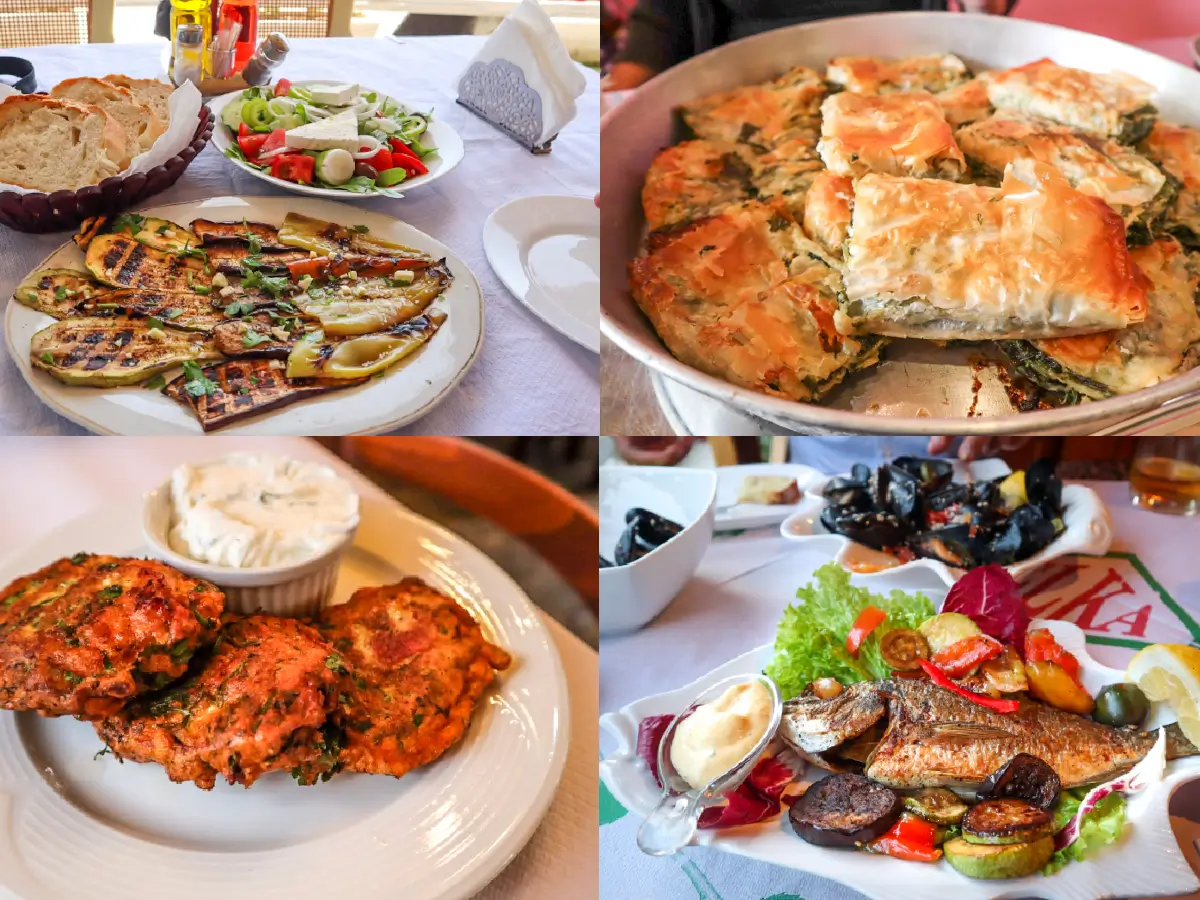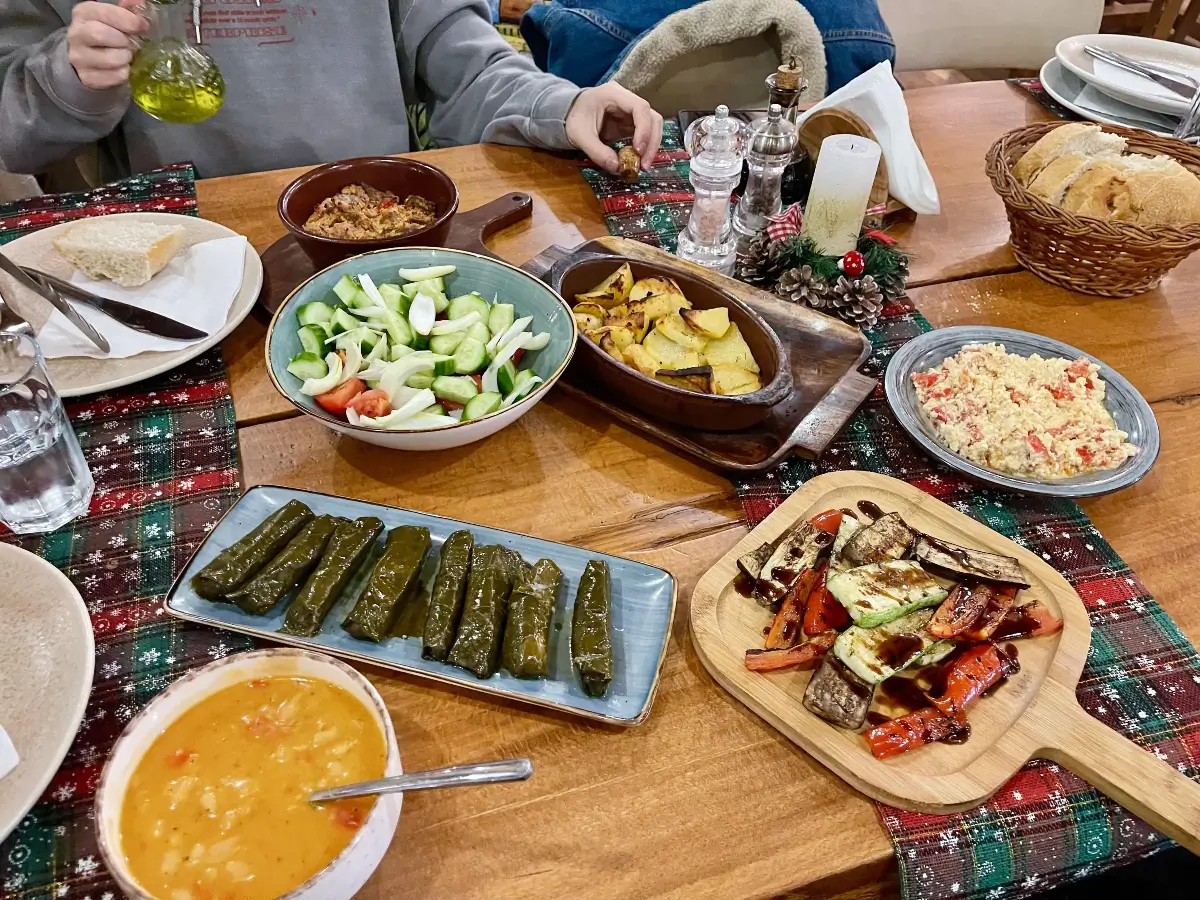Albanian food is shaped by land, tradition, and a strong sense of family. It’s not built on fast meals or complicated presentations — it’s rooted in simplicity, seasonality, and care. Meals are more than food. They are time spent together, stories passed down, and respect shown through sharing.
Every region in Albania has its specialties, but common threads run throughout: fresh ingredients, slow preparation, and a deep connection to the land.

What defines traditional Albanian food
Albanian cuisine is often described as a blend of Mediterranean and Balkan influences, but it has its own rhythm and flavor. It reflects a way of life that values local products, homemade preparation, and eating in good company.
Key characteristics of traditional Albanian food:
-
Homegrown ingredients – Vegetables, herbs, and fruits are often grown in backyard gardens or local farms
-
Meat as a centerpiece – Lamb, beef, and chicken are common, often grilled, roasted, or stewed
-
Homemade bread and dairy – Freshly baked bread and locally made cheese are staples of every meal
-
Olive oil and wild herbs – Used in cooking and dressing, especially in southern Albania
-
Seasonal eating – Dishes change with the seasons, based on what’s fresh and available
Cooking methods tend to be slow and thoughtful. Meals take time, and that time is valued.
Signature Albanian dishes
Traditional food in Albania varies by region, but a few dishes are widely loved and commonly found across the country:
-
Byrek – A flaky pastry filled with cheese, spinach, or meat, baked in layers and often served as a snack or breakfast
-
Tavë kosi – Baked lamb with yogurt and eggs, a comfort dish from Elbasan known for its creamy texture
-
Fërgesë – A mix of peppers, tomatoes, and cottage cheese, often served warm with bread
-
Qofte – Grilled or fried meatballs seasoned with local herbs
-
Speca të mbushura – Bell peppers stuffed with rice, herbs, and sometimes minced meat
-
Petulla – Fried dough served with honey or cheese, often as a breakfast or treat
-
Trileçe – A soft milk-soaked dessert cake that’s become a national favorite
Many families also make their own ajvar, pickled vegetables, and fruit preserves, stored in glass jars for winter months.
How meals are served and shared
In Albanian homes, meals are communal. The table is a place of conversation, laughter, and long pauses between bites. Meals are rarely rushed and often served with multiple dishes placed in the center for everyone to share.
Hospitality is deeply tied to food. Guests are offered generous portions, second servings are encouraged, and leaving the table hungry is unthinkable. Even simple meals carry meaning — especially when made with personal care.

Coffee or raki often follows a traditional meal, especially when guests are present. Dessert is less common with every lunch, but fresh fruit is typically served, especially in rural homes.
Regional diversity in Albanian cuisine
Albania’s geography creates sharp contrasts between coastal, lowland, and mountain food traditions. While many dishes are found across the country, flavors and techniques shift based on the region.
-
Northern Albania – Heartier dishes with more meat, corn-based breads, and dairy from mountain pastures
-
Southern Albania – Mediterranean flavors, olive oil, seafood, and slow-cooked vegetable dishes
-
Central Albania – A mix of northern and southern styles, with oven-baked meals and traditional casseroles
-
Rural areas – Simpler, ingredient-focused meals using what’s grown or raised locally
This diversity gives Albanian cuisine its depth, even though the recipes themselves are often simple.
Food as identity
Traditional Albanian food is more than nourishment — it’s cultural memory. It connects generations, tells stories, and reflects how people live with the seasons, the land, and each other.
Every dish carries meaning. Every table carries history.